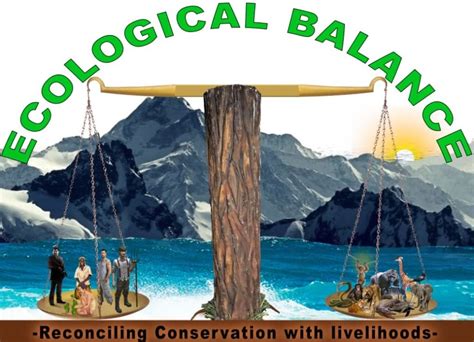In today’s interconnected world, the need for conservation biology has never been more apparent. As the delicate balance of our planet’s ecosystems continues to be threatened by human activity and climate change, the field of conservation biology plays a crucial role in preserving the Earth’s biodiversity and ecological harmony. This blog post will explore the multifaceted aspects of conservation biology, from understanding the fundamental importance of preserving natural habitats and ecosystems to the vital role of conservation genetics in saving endangered species from extinction. We will also delve into the challenges posed by invasive species and the strategies for managing them, as well as the global impact of climate change on conservation efforts. Additionally, we will discuss the significance of international cooperation and conservation policies, the complexities of human-wildlife conflict, and the role of conservation education in inspiring environmental stewardship. Lastly, we will explore the technological advances that are revolutionizing the field of conservation biology. Join us on this journey as we delve into the exciting and essential realm of conservation biology.
Table of Contents
Definition and Importance of Conservation Biology
Conservation biology can be defined as the scientific study of the protection and management of biodiversity. It is an interdisciplinary field that combines biology, ecology, and other natural sciences with a focus on preserving the environment and its inhabitants for future generations.
Conservation biology is important because it plays a crucial role in maintaining the balance of ecosystems and preventing the extinction of plant and animal species. It helps to ensure the sustainable use of natural resources and promotes the well-being of both wildlife and humans.
Conservation biology also addresses the impact of human activities on the environment and seeks solutions to minimize and prevent further damage. It involves conducting research, implementing conservation strategies, and raising awareness about the importance of preserving biodiversity.
Overall, the importance of conservation biology cannot be overstated, as it is essential for the health of our planet and all its inhabitants.
Understanding Ecosystems and Biodiversity
Ecosystems and biodiversity are essential components of the natural world, playing a crucial role in sustaining life on Earth.
Ecosystems encompass a complex web of living organisms, their physical environment, and the interactions between them. They can range from a small, local habitat to an entire biome, such as a rainforest or a coral reef.
Biodiversity, on the other hand, refers to the variety of life forms found in a particular ecosystem. This includes the diversity of species, genetic diversity within each species, and the variety of ecosystems themselves.
Understanding ecosystems and biodiversity is essential for conservation efforts, as it allows us to appreciate the interconnectedness of all living things and the impact of human activities on the natural world.
The Role of Conservation Genetics in Preserving Species
Conservation genetics plays a vital role in preserving endangered species and maintaining biodiversity. Through the study of genetic diversity within and between populations, scientists are able to identify at-risk species and develop effective conservation strategies to ensure their survival.
One of the key aspects of conservation genetics is the use of DNA analysis to assess the genetic health of populations. By examining the genetic makeup of individuals within a population, researchers can identify the level of inbreeding, which can lead to reduced fitness and increased susceptibility to disease. This information is crucial for implementing breeding programs and translocations to enhance genetic diversity and reduce the risk of extinction.
Another critical application of conservation genetics is the use of genetic monitoring to track changes in populations over time. By regularly sampling and analyzing genetic data, scientists can detect early signs of population decline or genetic erosion, allowing for timely intervention to prevent further loss of genetic diversity.
Furthermore, conservation genetics plays a key role in identifying and mitigating the impacts of anthropogenic threats such as habitat destruction, pollution, and climate change on the genetic health of species. This knowledge guides conservation efforts by highlighting the specific genetic vulnerabilities of populations and informing the development of targeted conservation measures.
Restoration Ecology: Rehabilitating Degraded Habitats
Restoration Ecology is a crucial field in conservation biology, focusing on the rehabilitation of degraded natural habitats. This discipline plays a vital role in reversing the damage done to ecosystems by human activities such as deforestation, urbanization, and industrialization. Through the implementation of restoration efforts, degraded habitats can be revitalized, allowing for the recovery of biodiversity and the provision of essential ecosystem services.
One key aspect of Restoration Ecology is the assessment of the extent and impact of degradation on a given habitat. By understanding the specific challenges that a degraded habitat faces, conservationists can develop targeted restoration plans tailored to the needs of the ecosystem. This may involve reintroducing native plant species, restoring natural water flows, or controlling invasive species that have disrupted the habitat’s balance.
Restoration Ecology also involves monitoring the progress of restoration efforts and evaluating the success of implemented strategies. By collecting and analyzing data on the recovery of vegetation, wildlife, and ecological processes, conservationists can make informed decisions about ongoing habitat rehabilitation. This ongoing assessment ensures that resources are utilized effectively and that the restored habitat can sustainably support biodiversity and ecosystem functions.
Overall, Restoration Ecology is a vital tool in the conservation biologist’s arsenal, allowing for the renewal of damaged ecosystems and the preservation of essential ecological communities. By focusing on rehabilitating degraded habitats, this field plays a crucial role in the broader mission of conservation biology, working to ensure the long-term health and resilience of natural environments.
Invasive Species: Threats and Management Strategies
Invasive species are non-native organisms that enter a new habitat and cause harm to the environment, economy, or human health. These species can outcompete native plants and animals, leading to a decline in biodiversity. They can also disrupt ecosystem processes, such as nutrient cycling and water purification. Invasive species pose a significant threat to global ecosystems and are a leading cause of extinctions.
There are various management strategies that can be implemented to minimize the impacts of invasive species. One approach is prevention, which involves strict regulations on the import and trade of potential invasive species. Early detection and rapid response are also key components of invasive species management, as it is often easier to control populations in the early stages of invasion. Additionally, control methods such as physical removal, chemical treatment, and biological control can be used to manage established invasive species populations.
It is crucial for governments, organizations, and individuals to work together to address the threats posed by invasive species. Collaborative efforts can help to prevent the spread of invasive species and mitigate their impacts on ecosystems. In addition, raising public awareness about the risks associated with invasive species can encourage responsible behavior and prevent unintentional introductions.
Overall, effective management of invasive species is essential for protecting native biodiversity and maintaining the ecological balance of natural ecosystems. By implementing preventative measures, early detection and rapid response protocols, and collaborative management strategies, the impacts of invasive species can be minimized, allowing native species to thrive and ecosystems to remain healthy and resilient.
Conservation and Climate Change: Mitigating Global Impacts
Conservation biology is not only about protecting species from extinction, but also about protecting ecosystems and biodiversity. As the earth’s climate continues to change at an alarming rate, conservation efforts must adapt to mitigate the global impacts of climate change. The importance of this endeavor cannot be overstated, as the health of our planet and all its inhabitants relies on the preservation of diverse and functional ecosystems.
One of the key strategies for mitigating the global impacts of climate change is to focus on restoration ecology, which involves rehabilitating degraded habitats. By restoring these areas, we can help ecosystems adapt to changing climates and provide vital resources for a wide range of species. Additionally, by addressing the spread of invasive species and implementing effective management strategies, we can minimize the harm they cause to native ecosystems and the species that depend on them.
In order to effectively address climate change on a global scale, it is crucial for diverse nations to collaborate on conservation policies and initiatives. International cooperation can lead to the sharing of knowledge, resources, and strategies that can make a significant impact on mitigating the global impacts of climate change. Furthermore, as human-wildlife conflict continues to be a challenge in many regions, finding ways to balance human needs with conservation efforts is a key aspect of mitigating the global impacts of climate change.
Finally, in order to inspire environmental stewardship and action, conservation education and awareness are essential. By educating people about the value of biodiversity, the impacts of climate change, and the role of conservation in mitigating these impacts, we can inspire individuals to take action and make a positive difference for the planet. What’s more, the ongoing development of technological advances in conservation biology can provide new tools and approaches for mitigating the global impacts of climate change, offering hope for the future of our planet.
Conservation Policies and International Cooperation
Conservation policies and international cooperation play a crucial role in the efforts to protect and preserve our planet’s natural habitats and biodiversity. These policies serve as the framework for regulating and managing resources to ensure long-term sustainability and environmental health. International cooperation is essential in addressing conservation challenges that extend beyond national borders, such as the protection of migratory species and the management of shared ecosystems.
International treaties and agreements, such as the Convention on Biological Diversity and the Ramsar Convention on Wetlands, provide a platform for countries to collaborate on conservation initiatives and share best practices. Through these international frameworks, countries can work together to establish protected areas, regulate the trade of endangered species, and implement measures to combat illegal wildlife trafficking.
Conservation policies also address issues related to sustainable development, land use planning, and the management of natural resources. They seek to strike a balance between human needs and environmental conservation, taking into account the socio-economic impact of conservation measures on local communities. Effective policies involve stakeholder engagement and collaboration with indigenous groups, local communities, and industry stakeholders to ensure that conservation efforts are inclusive and sustainable.
International cooperation and the implementation of sound conservation policies are vital in addressing global environmental challenges, such as habitat loss, climate change, and overexploitation of natural resources. By working together on a global scale, countries can enhance the effectiveness of their conservation efforts and achieve greater long-term success in preserving the planet’s ecological balance.
Human-Wildlife Conflict: Balancing Human Needs and Conservation
Human-wildlife conflict has become an increasingly pressing issue in many parts of the world, as human populations continue to expand and encroach upon natural habitats. This clash between human needs and conservation efforts poses a significant challenge for environmental stewardship.
Many communities around the world struggle to find a balance between the need for economic development and the preservation of wildlife and ecosystems. The conflict arises when wildlife competes with humans for resources, damages crops, or poses a threat to human safety.
Efforts to mitigate human-wildlife conflict involve implementing sustainable solutions that benefit both humans and wildlife. This may include the development of wildlife corridors, improved agricultural practices, and the use of non-lethal deterrents to reduce human-wildlife conflicts.
Ultimately, finding a balance between human needs and conservation requires effective collaboration between local communities, conservation organizations, and government agencies. By working together to develop and implement strategies that address the needs of both humans and wildlife, we can strive to mitigate human-wildlife conflict and promote coexistence.
Conservation Education and Awareness: Inspiring Environmental Stewardship
Conservation education and awareness play a crucial role in inspiring environmental stewardship. It is essential for individuals to have a deep understanding of the interconnectedness of ecosystems and the importance of biodiversity in order to become responsible stewards of the environment. Through education and awareness efforts, people can become more conscious of their impact on the natural world and take positive actions to preserve and protect it.
Conservation education involves teaching individuals about the significance of conservation biology, the threats to ecosystems and wildlife, and the solutions to address these challenges. This can be done through formal education in schools, as well as through informal education in the form of workshops, nature camps, and community events. By imparting knowledge about the environment and the need for conservation, individuals can develop a sense of responsibility towards the planet.
Furthermore, raising awareness about conservation issues is essential to inspire environmental stewardship. This can be achieved through media campaigns, documentaries, and social media platforms that highlight the importance of protecting natural habitats and wildlife. When people are made aware of the impacts of their actions, they are more likely to make environmentally friendly choices and support conservation efforts.
Ultimately, conservation education and awareness are key components in inspiring individuals to become environmental stewards. By fostering a sense of responsibility and providing the knowledge needed to make informed decisions, these efforts can lead to a collective commitment to preserving the natural world for future generations.
Technological Advances in Conservation Biology
Technological advances in conservation biology have revolutionized the way we approach and tackle environmental conservation challenges. These advances encompass a wide range of tools and techniques that enable scientists and conservationists to study, monitor, and protect ecosystems and biodiversity more effectively than ever before.
One major technological advancement is the use of geographic information systems (GIS) and remote sensing technologies. These tools allow conservation biologists to analyze and visualize spatial data, such as habitat fragmentation, land use changes, and species distribution, providing valuable insights for effective conservation planning and decision-making.
Another important technological advance is the development of genetic monitoring tools, which allow scientists to track the genetic diversity and health of populations. DNA sequencing and genomics have revolutionized conservation genetics, providing a deeper understanding of species evolution, adaptation, and the impact of human activities on genetic diversity.
Furthermore, the use of camera traps, drones, and satellite tracking devices has greatly enhanced the ability to monitor and study wildlife populations, including elusive and endangered species, in their natural habitats. These tools provide valuable data for conservation efforts, from identifying critical habitats to monitoring migration patterns and assessing the impacts of climate change and human-wildlife conflict.





